NIIS Cryo-Mechanical Design
Dewar and Optical Bench
NIIS is designed as a portable imaging spectrograph. Its initial deployment is planned for the Apache Point Observatory 3.5 meter telescope. NIIS will be used at the Nasmyth focus of this ALT-AZ telescope, which means the instrument will rotate about its optical axis as the telescope tracks across the sky. NIIS is designed as a wide-field, survey instrument and is hence quite large. The dewar is approximately 27 inches in diameter and 7 feet in length. The mechanical design of NIIS is based on FLAMINGOS (U. Florida) and MMIRS (SAO/Harvard & U. Arizona). It features an optical bench with an LN2 tank supporting a traditional corrector, collimator, camera design with a Hawaii-2 HgCdTe detector array. This design enables both wide-field imaging and a spectroscopic upgrade path. It features a traditional collimator/camera design with a filter wheel located in the collimated beam and at the pupil of the system.
Dewar and Mechanical Components
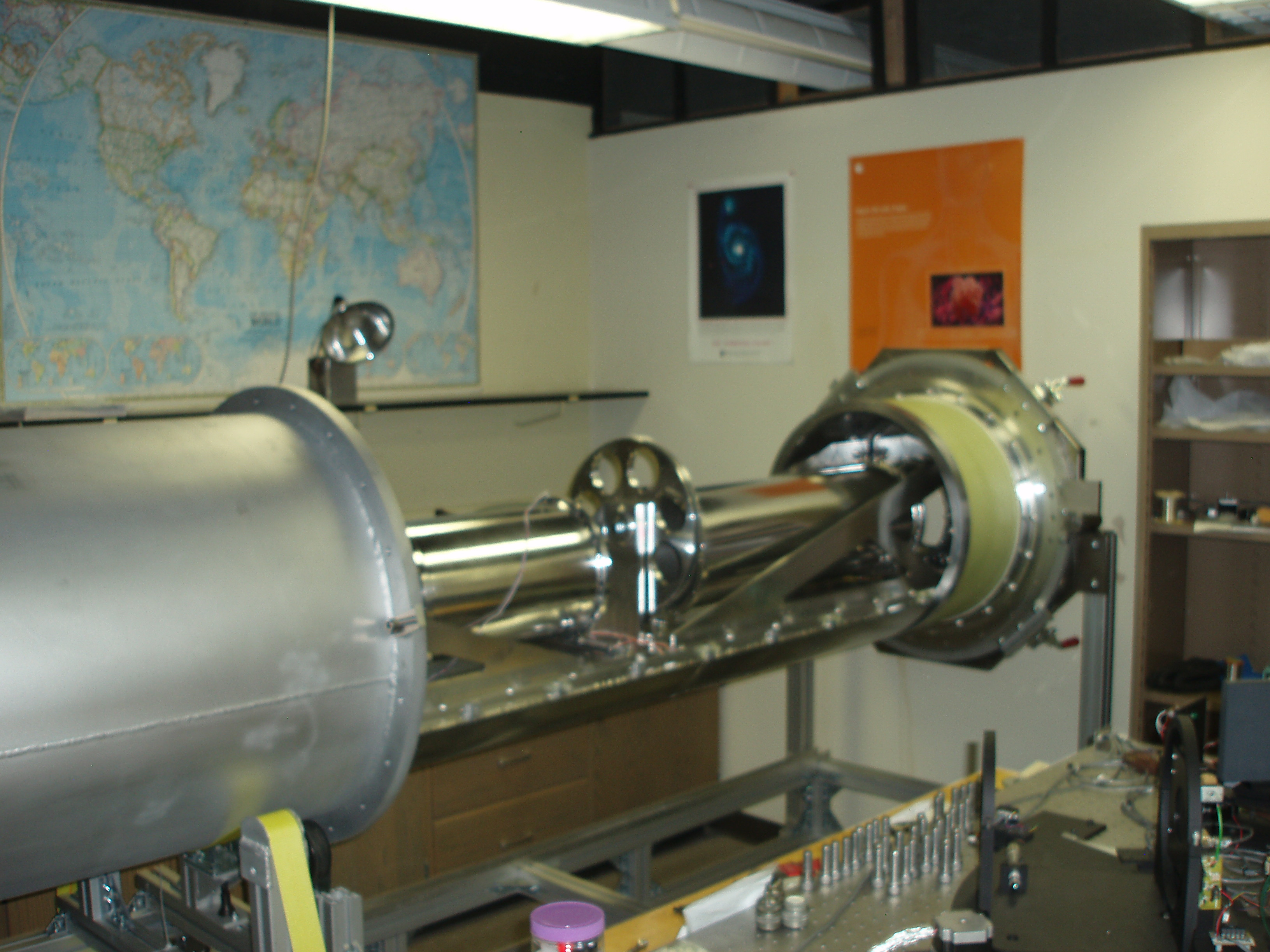
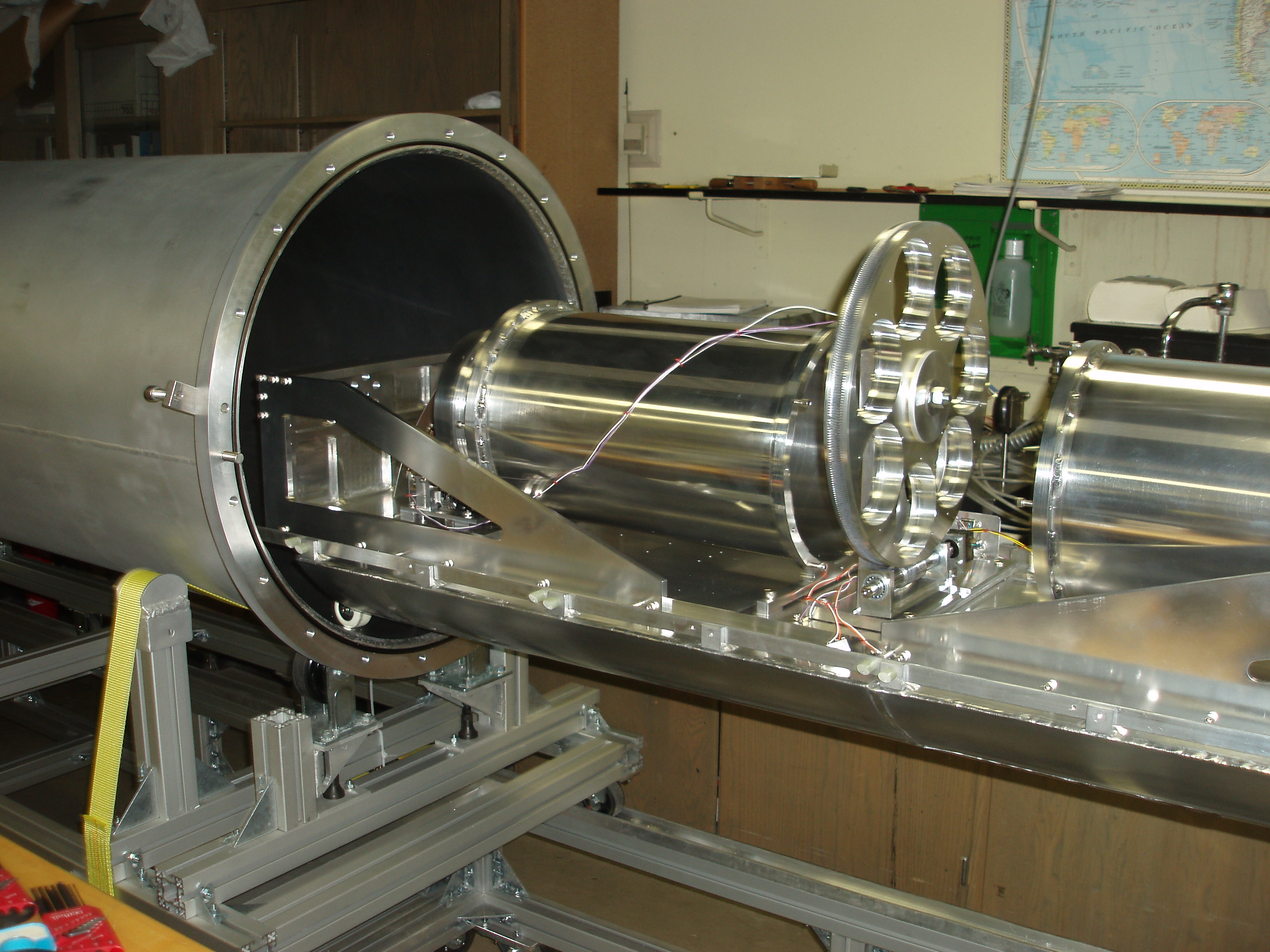
The three lens stacks are separately assembled within support tubes mounted to the optical bench. The photos above shows the dewar opened to reveal the optical bench and the main mechanical components. Left: The optical bench and the lens support tubes. The filter wheel assembly is visible between the collimator and camera modules. On the far right is the G-10 support ring which thermally isolates the optical bench and LN2 tank from the warm dewar body. Right: a close-up of the camera stack and filter wheel assembly. The rear of the bench is normally supported from the rear flange by a G-10 "snowflake" that provides radial support for the bench while enabling it to contract length-wise as it cools to cryogenic temperature (see below). During assembly the bench is temporarily supported by a removable set of skateboard wheels once the G-10 star is disconnected from the rear of the optical bench. The wheels roll along the dewar body and support the rear of the bench enabling the dewar shell to be slid back revealing the optical bench and its mechanical components.
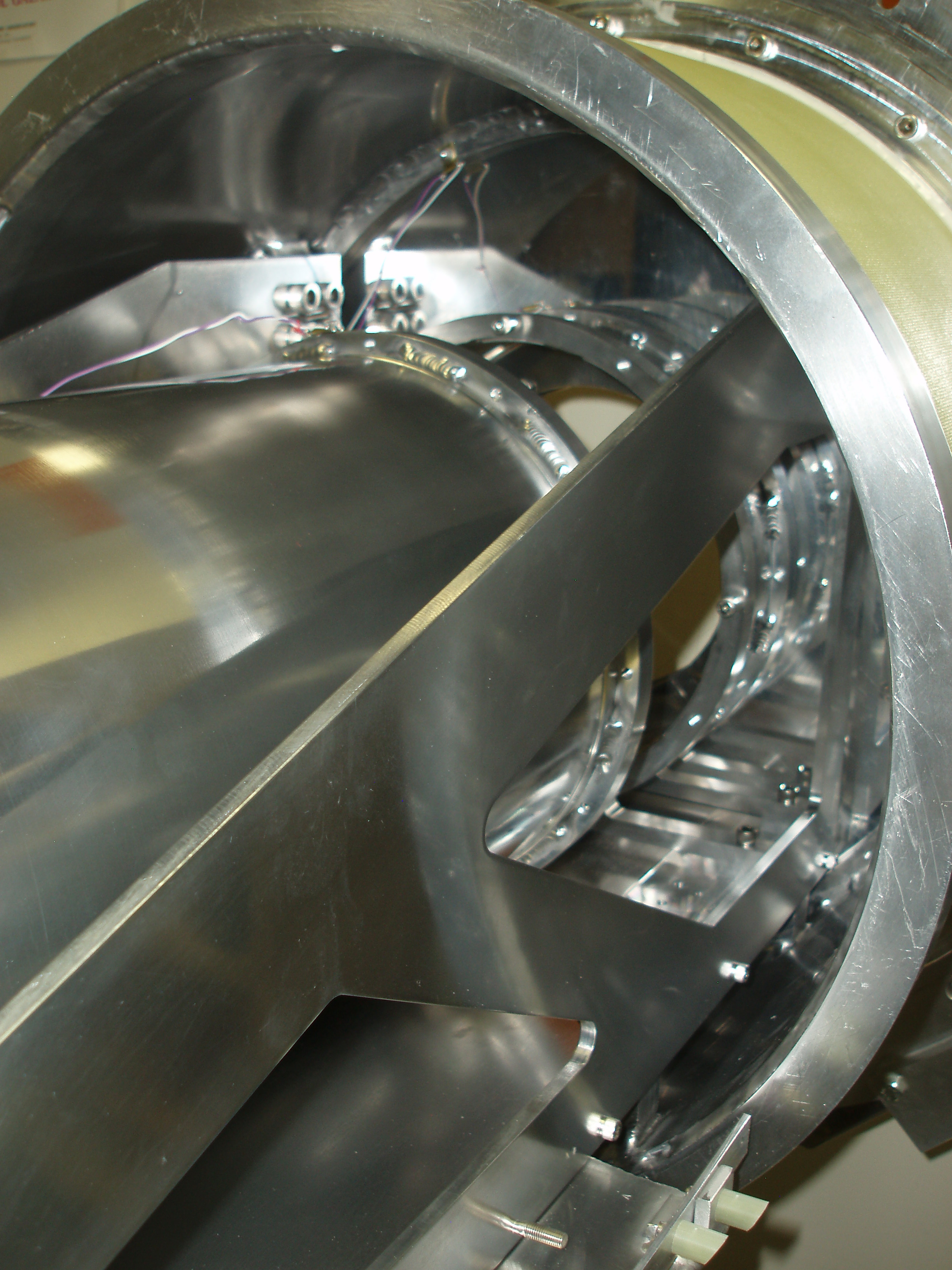
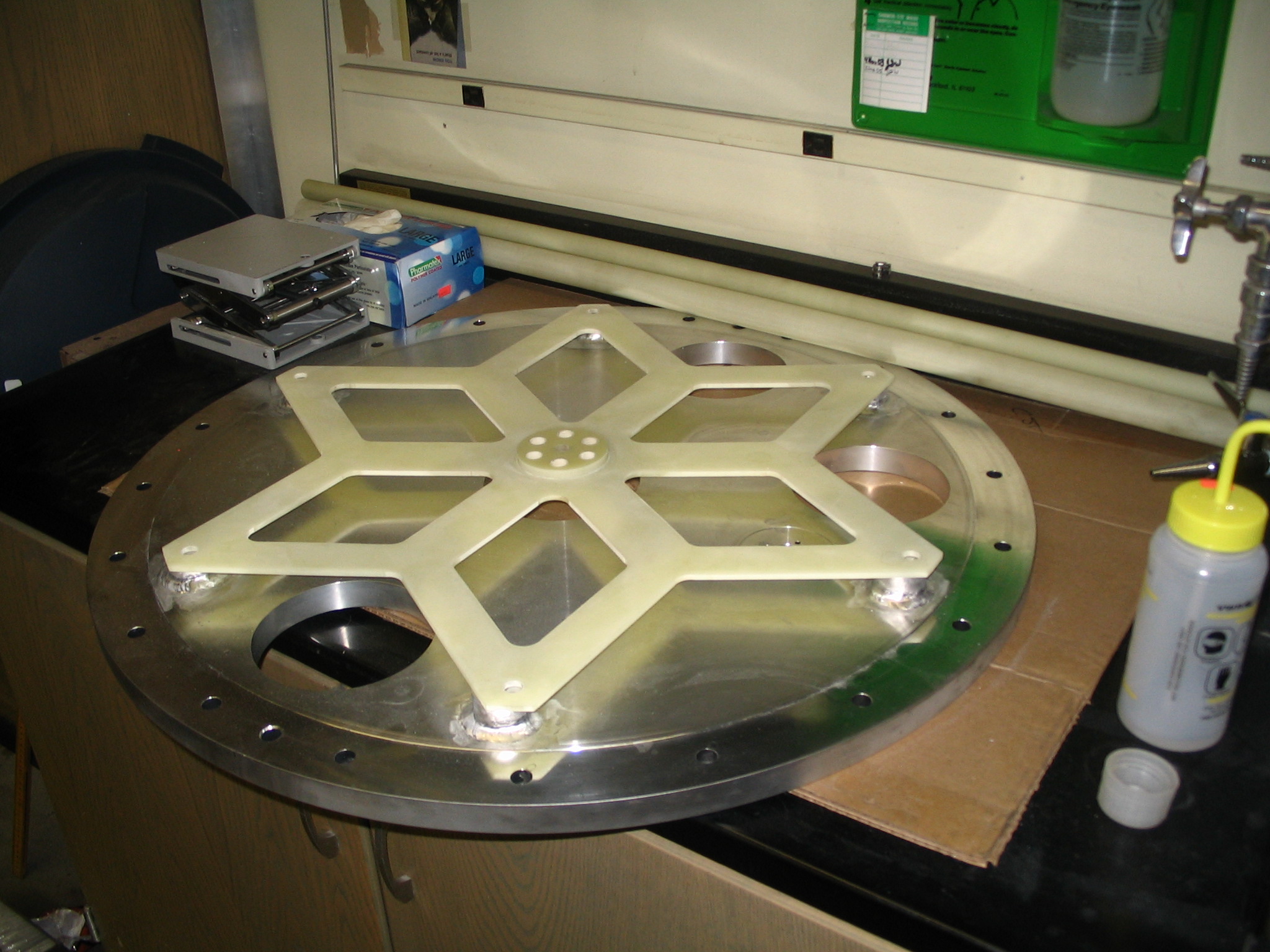
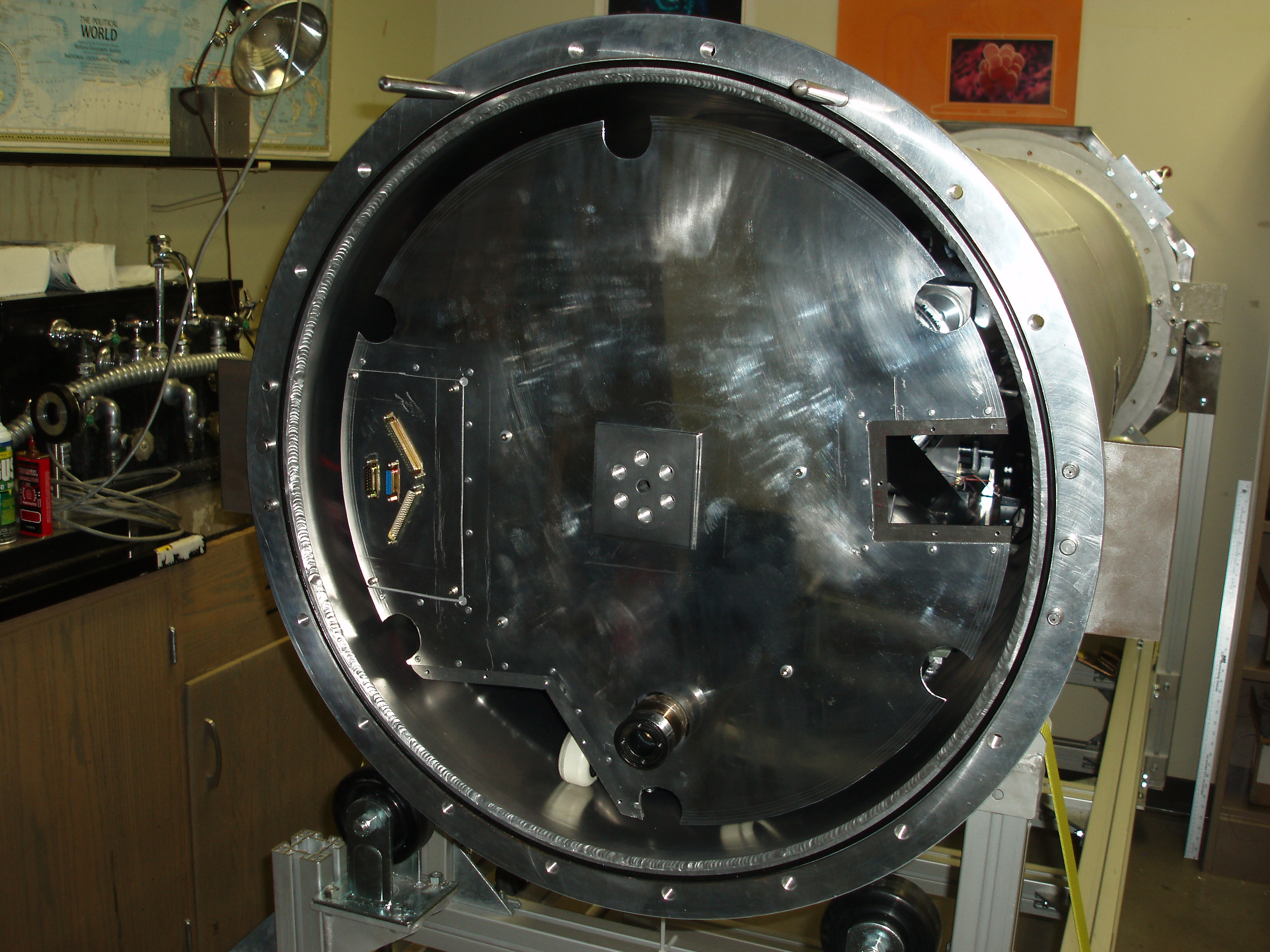
The G-10 support structures for supporting and thermally isolating the optical bench. Left: Close-up of the G-10 support ring for the front of the optical bench. Cryogenic epoxy (Loctite Hysol) is used to glue the ring into an aluminum ring bolted to the front dewar flange and to an additional aluminum ring which support the front of the optical bench and its support struts. The front cold and radiation shields attach to the ring just inside the front dewar flange. Center: The rear dewar flange and the G-10 "snowflake" which supports the rear of the optical bench. Access ports can be seen in the rear flange which allow the insertion of a small screw jack to support the rear of the bench while the skateboard wheels are attached. Additional ports contain the hermetic, electrical feed throughs which can be removed via interconnects on the rear cold and radiation shields as seen in the right-most photo. The attachment point on the optical beanch for the G-10 snowflake is visbile in the center of the radiation shield along with the LN2 fill tube near the bottom of the dewar.
Dewar Handling Carts
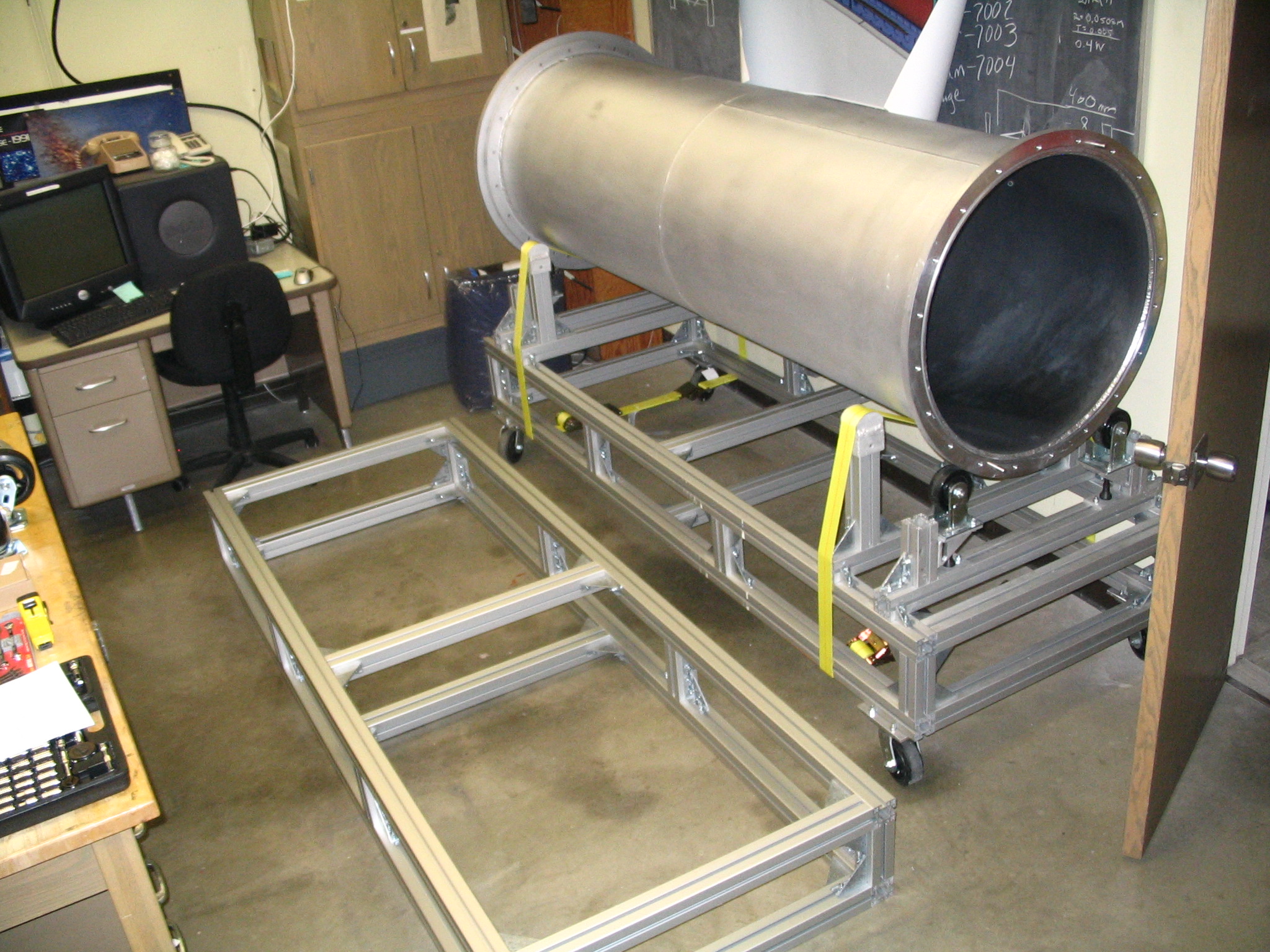
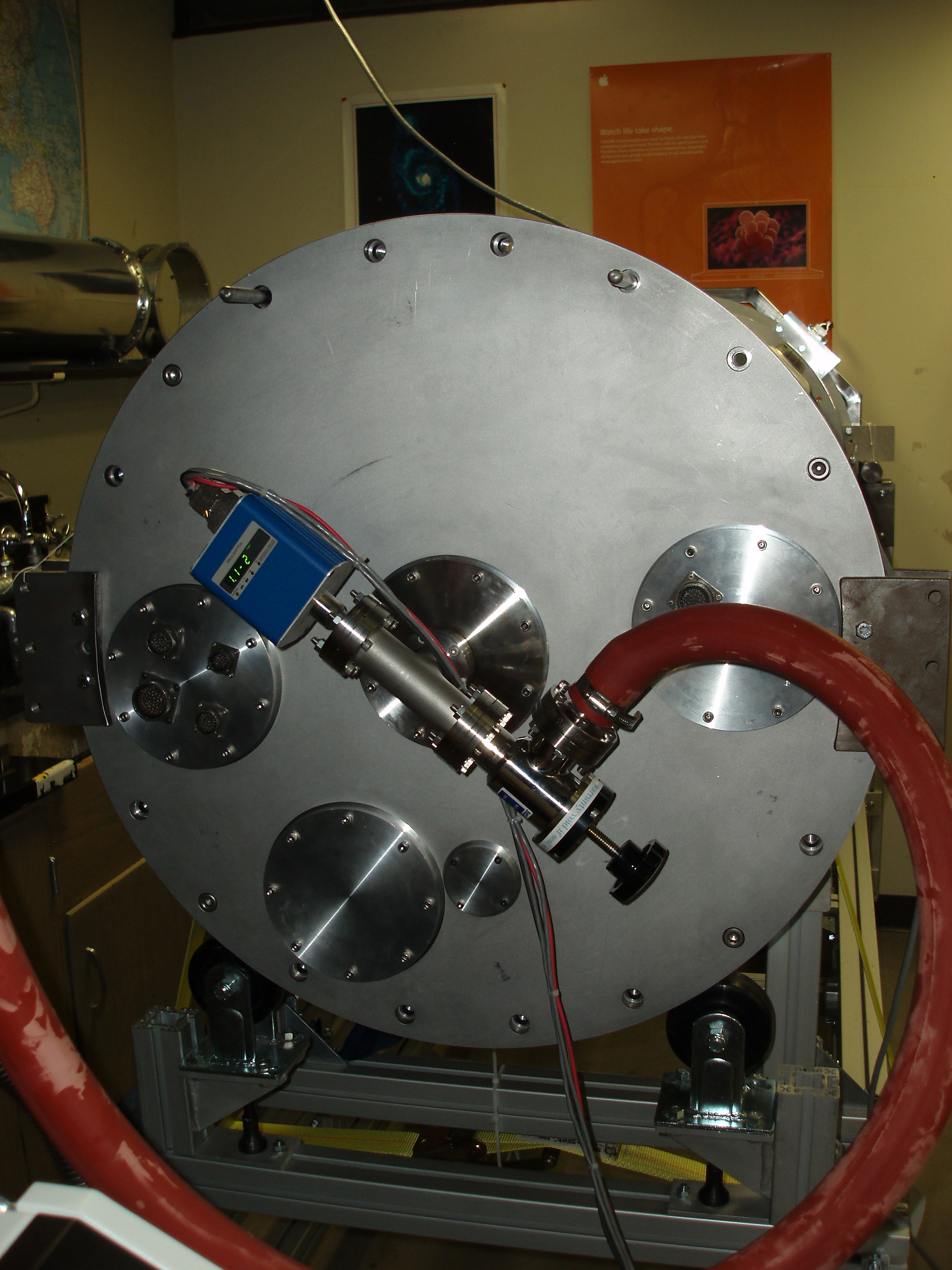
The large size and weight of NIIS requires a handling cart to support the instrument when it is not mounted on the telescope and when it is to be opened for assembly and maintenence. The photo above shows the cart system used for NIIS in the lab. The dewar is mounted on a cart and supported by wheels and safety straps to allow the dewar shell to be rotated and aligned with the front flange. The second cart can be attached to the rear of the dewar cart to enable the dewar shell to be separated from the front flange and bench and rolled-banck to reveal the internal cryo-mechanical parts of the instrument. Once work on the internal components is complete the dewar shell can be rolled back over the optical bench and the rear flange reattached to the G-10 snowflake, the skateboard wheels removed, and the dewar sealed. The secondary cart can then detached from the primary dewar cart.The right-hand image shows the rear flange. The access ports are visible along with the vacuum valve and gauge.
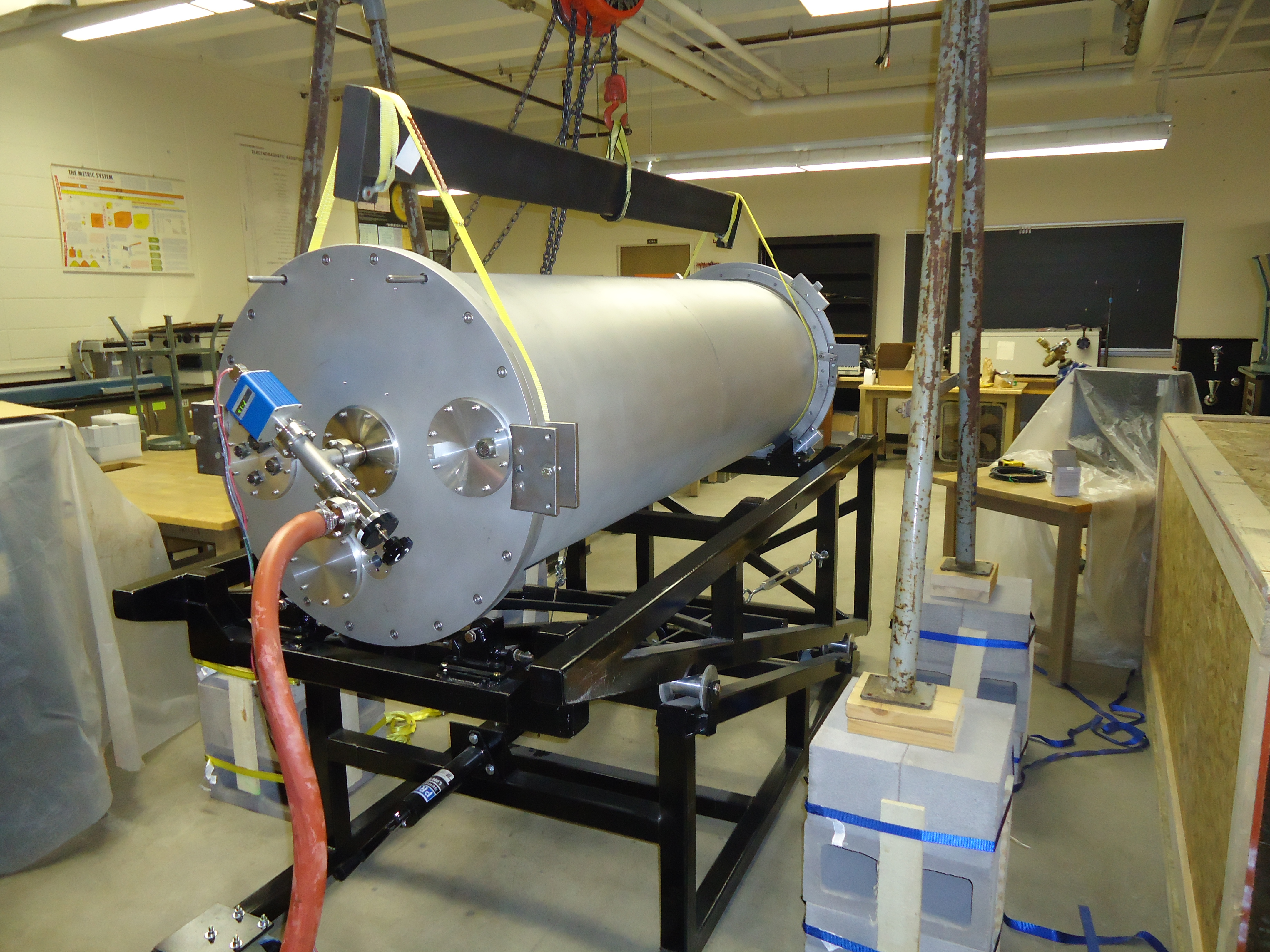
Rear view of NIIS on the telecope mounting cart. The design of the cart is very similar to that of DIS at Apache Point Observatory. The two wedges roll relative to each other via the cables and hand crank to allow the top protion to be raised and lowered for attaching the telescope support cart onto the telesccope mounting pins. Quick-release clamps then attach the front of NIIS onto the instrument rotator. Once attached, the low cart can be disconnected and rolled away. The front of the instrument is supported by the instrument rotator at the APO Nasymth port and the rear of the instrument is supported on the rollers visible at the rear of the cart. An alignment mechanism allows the rear of the instrument to raised, lowered, or translated with respect to the front in order to allow the instrument to aligned with the optical axis of the telescope. The large A-frame hoist was used to test fit NIIS onto its telecope support cart.